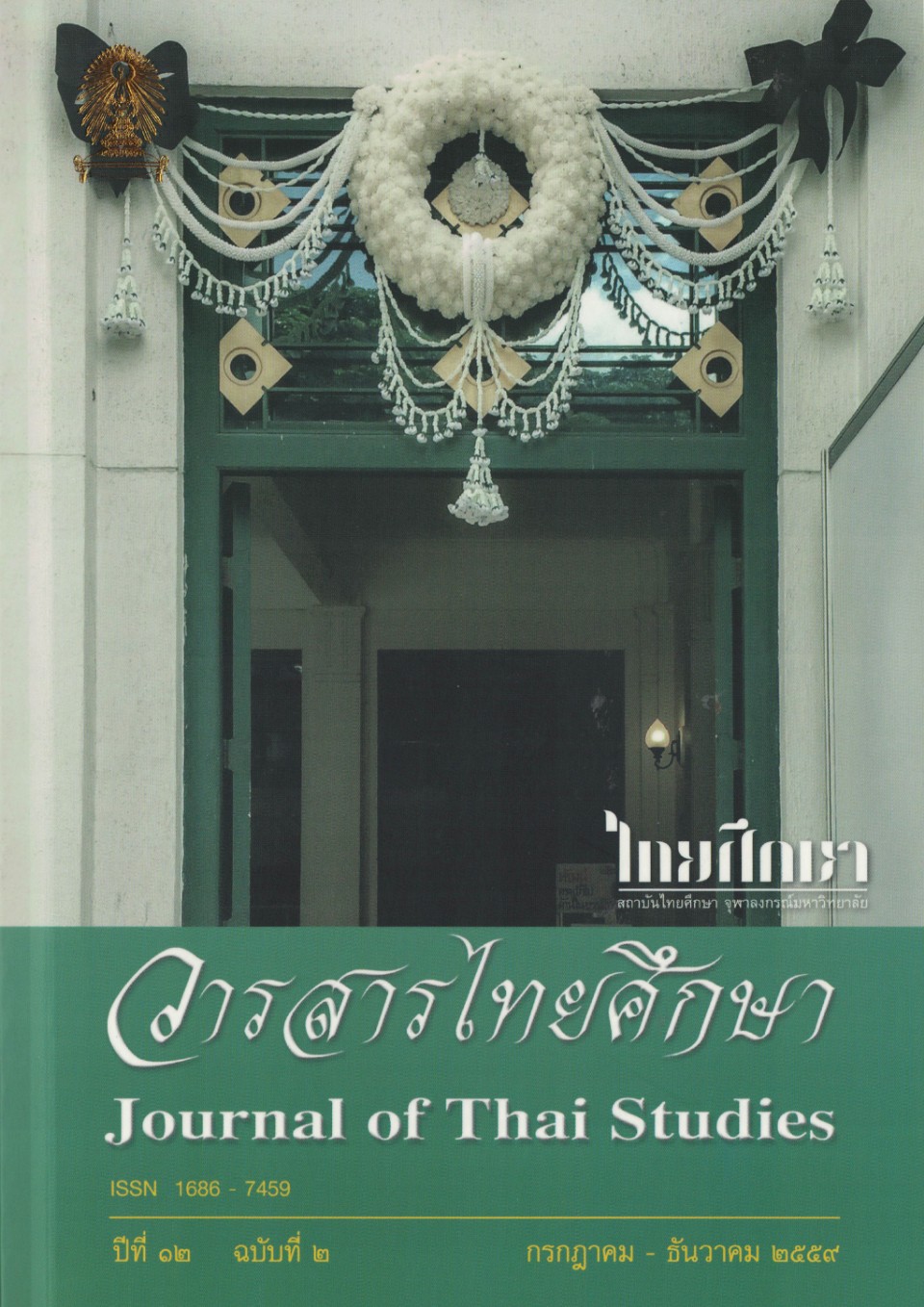A Semantics Study of Hand-Related Verbs in Chaingrai Dialect of Thai
Main Article Content
Abstract
This study aims at classifying types of hands-related verbs spoken in Chiang Rai dialects by using componential analysis.
For the data collection procedure, the researcher started with defining hands-related verbs and grouping them in accordance with the Lanna-Thai dictionary. Then, the data was analyzed using componential analysis by taking the interrelationship between nouns and verbs into consideration to study the differences and components of each word. The data was checked by language informants who were originally born and raised in Chiang Rai.
The study showed that hands-related verbs can be grouped into nine categories: hands-related verbs indicating how to hold something; hands-related verbs indicating how to uncover something; hands-related verbs indicating how to move something; hands-related verbs showing how to raise something; hands-related verbs showing how to grasp something in a hole or take something out, which may or may not take something out of the hole; hands-related verbs showing how to make a scratch; hands-related verbs showing how to control or press something; and hands-related verbs showing how to touch something. In addition, this study also showed the differences of words in each category which denotes their closely-related meanings.
Downloads
Article Details

This work is licensed under a Creative Commons Attribution-NonCommercial-NoDerivatives 4.0 International License.
Journal of Thai studies is licensed under a Creative Commons Attribution-Noncommercial-NoDerivatives4.0 Intenational (CC BY-NC-ND 4.0) licence, unless otherwise stated. Plese read our Policies page for more information on Open Access, copyright and permissions.
References
กรรณิการ์ วิมลเกษม. ภาษาถิ่นเหนือ. ภาควิชาภาษาตะวันออก คณะโบราณคดี มหาวิทยาลัยศิลปากร, ๒๕๓๔.
นววรรณ พันธุเมธา. คลังคำ. กรุงเทพฯ :อมรินทร์พริ้นติ้งแอนด์พับลิชชิ่ง จำกัด (มหาชน), ๒๕๔๗.
_________. ไวยากรณ์ไทย. พิมพ์ครั้งที่ ๔. กรุงเทพฯ: โครงการเผยแพร่ผลงานวิชาการ คณะอักษรศาสตร์จุฬาลงกรณ์มหาวิทยาลัย, ๒๕๕๑.
พรพิลาส เรืองโชติวิทย์. การวิเคราะห์ความหมายของคำ. ภาควิชาภาษาไทย คณะมนุษยศาสตร์ มหาวิทยาลัยเชียงใหม่, ๒๕๓๕.
พัชรี พลาวงศ์. ความรู้เบื้องต้นทางอรรถศาสตร์. พิมพ์ครั้งที่ ๒. กรุงเทพฯ: สำนักพิมพ์มหาวิทยาลัยรามคำแหง, ๒๕๔๒.
เพียรศิริ วงศ์วิภานนท์. เอกสารการสอนและแบบฝึกหัดปฏิบัติชุดวิชาภาษาไทย ๓ หน่วยที่ ๑๓. สาขาวิชาศึกษาศาสตร์มหาวิทยาลัยสุโขทัยธรรมาธิราช, ๒๕๒๕.
ราชบัณฑิตยสถาน. พจนานุกรม ฉบับราชบัณฑิตยสถาน พ.ศ. ๒๕๕๔. พิมพ์ครั้งที่ ๒. กรุงเทพฯ: นานมีบุ๊คส์พับลิเคชั่น, ๒๕๕๖.
สุวิไล เปรมศรีรัตน์. (มกราคม-มิถุนายน ๒๕๒๖). “เรื่องคำตัดในภาษาไทย.” วารสารภาษาและวัฒนธรรม. ปีที่ ๓: เล่มที่ ๑, น.๑๗-๓๐.
อัญชลิกา ผาสุกกิจ. คำเรียกรสในภาษาถิ่นตามแนวอรรถศาสตร์ชาติพันธุ์. วิทยานิพนธ์ปริญญาอักษรศาสตรมหาบัณฑิต, สาขาวิชาภาษาศาสตร์ ภาควิชาภาษาศาสตร์ คณะอักษรศาสตร์ จุฬาลงกรณ์มหาวิทยาลัย, ๒๕๔๓.
อุดม รุ่งเรืองศรี. พจนานุกรมล้านนา – ไทย ฉบับแม่ฟ้าหลวง. เชียงใหม่: โรงพิมพ์มิ่งเมือง, ๒๕๔๗.
Fillmore, Charles. The case for case. Universals in Linguistic Theory, 1-88, edited by E. 1968.
Bach & R.t. Harms.London: Holt, Rinchart & Winston. อ้างถึงใน อมรา ประสิทธิ์ รัฐสินธุ์ ยุพาพรรณ หุ่นจำลอง และสรัญญา เศวตมาลย์. ทฤษฎีไวยากรณ์. กรุงเทพฯ: โรงพิมพ์แห่งจุฬาลงกรณ์มหาวิทยาลัย, ๒๕๕๔.
Fillmore, Charles. Some problems for case grammar. Working Papers in Linguistics. Ohio State University 10, 1970: 245-265. อ้างถึงใน นววรรณ พันธุเมธา. เอกสารการสอนชุดวิชาภาษาไทย ๓ เล่ม ๒ หน่วยที่ ๗ - ๑๕. พิมพ์ครั้งที่ ๘. สาขาวิชาศึกษาศาสตร์ มหาวิทยาลัยสุโขทัยธรรมาธิราช, ๒๕๔๒.


